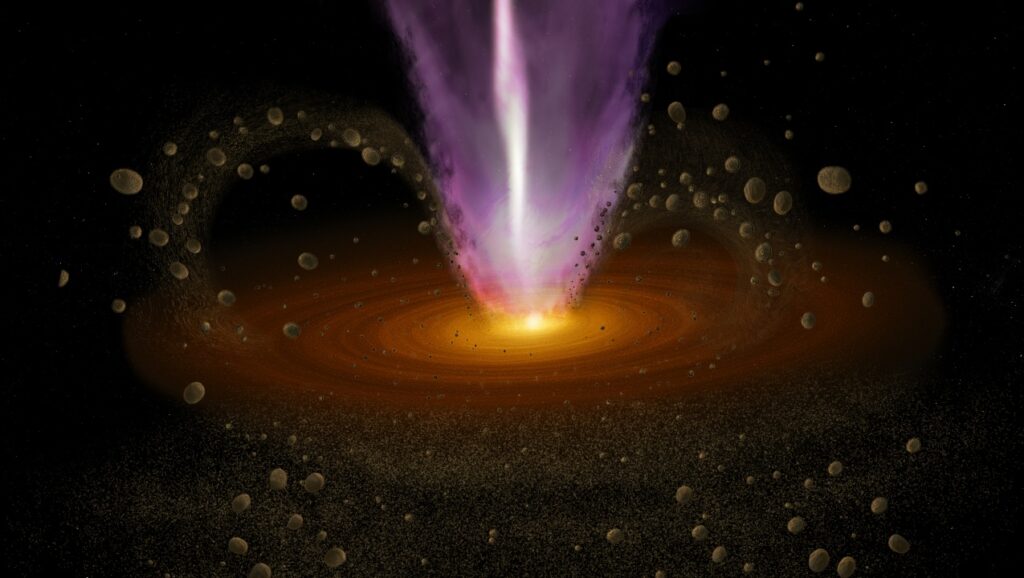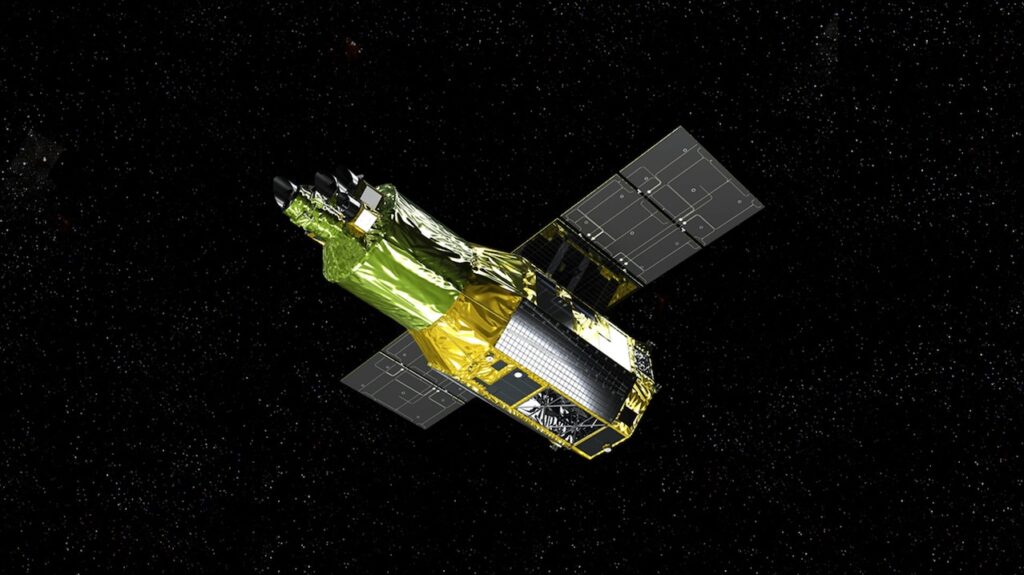Interstellar Complex Organic Molecules In SiO-traced Massive Outflows

The interstellar medium contains dust and gas, in which at high densities and cold conditions molecules can proliferate. Interstellar Complex Organic Molecules (iCOMs) are C-bearing species that contain at least six atoms.
As they are detected in young stellar objects, iCOMs are expected to inhabit the early stages of the star formation evolution. In this study, we try to determine which iCOMs are present in the outflow component of massive protostars. To do this, we analyzed the morphological extension of blue- and red-shifted iCOMs emission in a sample of eleven massive protostars employing mapping observations at one mm within a ~1 GHz bandwidth for both IRAM-30m and APEX telescopes.
We modeled the iCOMs emission of the central pointing spectra of our objects using the XCLASS LTE radiative transfer code. We detected the presence of several iCOMs such as: CH3OH, 13CH3OH, CH3OCHO, C2H5C15N, and c-C3H2)CH2. In G034.41+0.24, G327.29-0.58, G328.81+0.63, G333.13-0.43, G340.97-1.02, G351.45+0.66 and G351.77-0.54, the iCOMs lines show a faint broad line profile.
Due to the offset peak positions of the blue- and red-shifted emission, covering from ~0.1 to 0.5 pc, these wings are possibly related to movements external to the compact core, such as large-scale low-velocity outflows.
We have also established a correlation between the parent iCOM molecule CH3OH and the shock tracer SiO, reinforcing the hypothesis that shock environments provide the conditions to boost the formation of iCOMs via gas-phase reactions.
O. S. Rojas-García, A. I. Gómez-Ruiz, A. Palau, M. T. Orozco-Aguilera, M. Chavez Dagostino, S. E. Kurtz
Comments: 21 pages, 10 figures, 4 tables, accepted to APJS
Subjects: Astrophysics of Galaxies (astro-ph.GA)
Cite as: arXiv:2207.09426 [astro-ph.GA] (or arXiv:2207.09426v1 [astro-ph.GA] for this version)
https://doi.org/10.48550/arXiv.2207.09426
Focus to learn more
Submission history
From: Omar Sergio Rojas García
[v1] Tue, 19 Jul 2022 17:38:44 UTC (25,578 KB)
https://arxiv.org/abs/2207.09426
Astrobiology, Astrochemistry,








